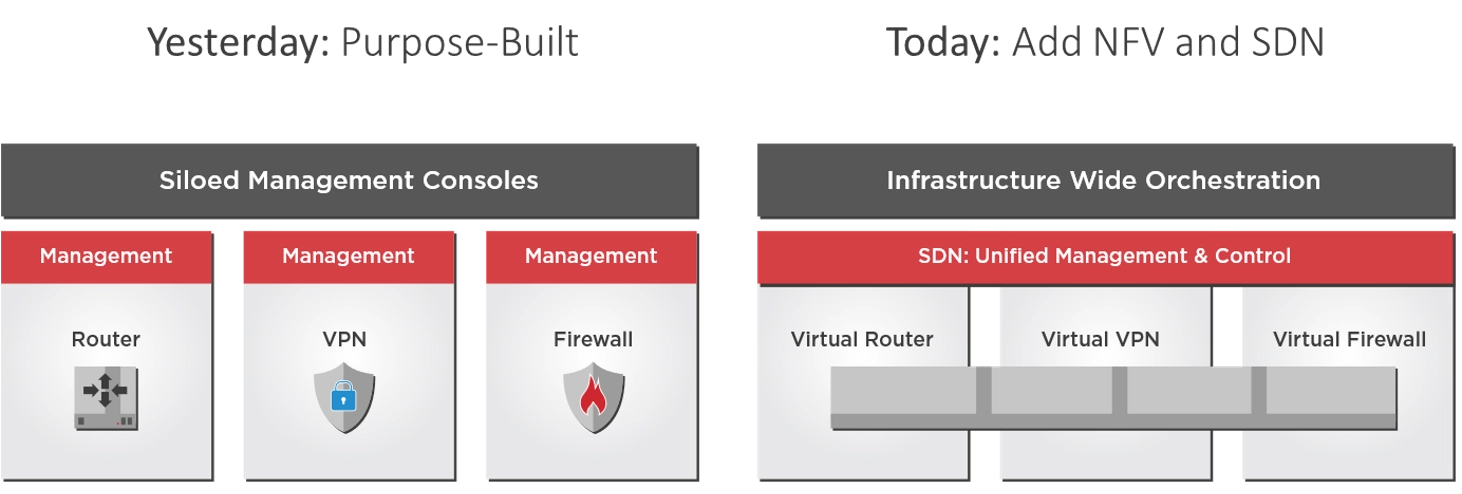Towards a Zero Touch Coherent Network
Telecommunication service providers face a critical challenge: how to incorporate affordable and compact coherent pluggables into their networks while ensuring optimal performance and coverage across most network links.
Automation will be pivotal in achieving affordable and sustainable networks. Software defined networks (SDNs) facilitate network function virtualization (NFV), empowering operators to implement various functions for network management and orchestration. By incorporating an artificial intelligence (AI) layer for management and orchestration with the SDN/NFV framework, operators can unlock even greater benefits, as depicted in the diagram below.

Nevertheless, achieving a fully automated network requires interfacing with the physical layer of the network. This requires intelligent, coherent pluggables capable of adapting to diverse network requirements.
Zero Touch Networks and the Physical Layer
Telecom and datacom providers aiming to achieve market leadership must scale their operations while efficiently and dynamically allocating existing network resources. SDNs offer a pathway to accomplish this by decoupling switching hardware from software, thereby enabling the virtualization of network functions through a centralized controller unit. This centralized management and orchestration (MANO) layer can implement network functions that switches alone cannot handle, enabling intelligent and dynamic allocation of network resources. This enhanced flexibility and optimization yield improved network outcomes for operators.

However, the forthcoming 5G networks will introduce a multitude of devices, software applications, and technologies. Managing these new devices and use cases necessitates self-managed, touchless automated networks. Realizing the full potential of network automation requires the flow of sensor and control data across all OSI model layers, including the physical layer.
As networks grow larger and more complex, MANO software necessitates greater degrees of freedom and adjustability. Next-generation MANO software must optimize both the physical and network layers to achieve the best network fit. Attaining this objective demands intelligent optical equipment and components that can be diagnosed and managed remotely from the MANO layer. This is where smart pluggable transceivers with reconfigurable DSPs come into play.
The Role of Forward Error Correction
Forward error correction (FEC) implemented by DSPs serves as a crucial component in coherent communication systems. FEC enhances the tolerance of coherent links to noise, enabling longer reach and higher capacity. Thanks to FEC, coherent links can handle bit error rates that are a million times higher than those of typical direct detect links. In simpler terms, FEC algorithms allow the DSP to enhance link performance without necessitating hardware changes. This enhancement can be compared to image processing algorithms improving the quality of images produced by phone cameras.

When coherent transmission technology emerged, all FEC algorithms were proprietary, guarded closely by equipment and component manufacturers due to their competitive advantage. Consequently, coherent transceivers from different vendors were incompatible, and network deployment required reliance on a single vendor.
However, as data center providers pushed for deeper disaggregation in communication networks, the need for interoperability in coherent transceivers became evident, leading to the standardization of FEC algorithms. The OIF 400ZR standard for data center interconnects adopted a public algorithm called concatenated FEC (CFEC). In contrast, some 400ZR+ MSA standards employ open FEC (oFEC), which provides greater reach at the expense of additional bandwidth and energy consumption. For the longest link lengths (500+ kilometers), proprietary FECs are still necessary for 400G transmission. Nevertheless, public FEC standards have achieved interoperability for a significant portion of the 400G transceiver market.
The Promise of the Smart Transceiver
The realization of a smart coherent pluggable capable of addressing various applications—data centers, carrier networks, SDNs—relies on an equally intelligent and adaptable DSP. The DSP must be reconfigurable through software to adapt to diverse network conditions and use cases.
For instance, a smart DSP could switch between different FEC algorithms to match network performance and use case requirements. Consider the scenario of upgrading a 650-kilometer-long metro link running at 100 Gbps with open FEC to achieve a capacity of 400 Gbps. Open FEC might struggle to deliver the required link performance. However, if the DSP can be reconfigured to employ a proprietary FEC standard, the transceiver would be capable of handling this upgraded link.
| 400ZR | Open ZR+ | Proprietary Long Haul | |
|---|---|---|---|
| Target Application | Edge data center interconnect | Metro, Regional data center interconnect | Long-Haul Carrier |
| Target Reach @ 400G | 120km | 500km | 1000 km |
| Form Factor | QSFP-DD/OSFP | QSFP-DD/OSFP | QSFP-DD/OSFP |
| FEC | CFEC | oFEC | Proprietary |
| Standards / MSA | OIF | OpenZR+ MSA | Proprietary |
Reconfigurable DSPs also prove beneficial in auto-configuring links to address specific network conditions, particularly in brownfield links. For example, if the link possesses high-quality fiber, the DSP could be reconfigured to transmit at a higher baud rate. Conversely, if the fiber quality is poor, the DSP could scale down the baud rate to mitigate bit errors. Furthermore, if the smart pluggable detects a relatively short fiber length, it could reduce laser transmitter power or DSP power consumption to conserve energy.
Takeaways
Smart coherent access pluggables would greatly simplify network upgrades. The DSP to match this pluggable should be able to use different error correction levels to handle different reach and future zero-touch network requirements.
The DSP can not only introduce software corrections but also effectuate optical hardware adjustments (output power, amplifier control) to adapt to different noise scenarios. Through these adaptations, the next generation of pluggable transceivers will proficiently handle the telecom carrier and data center use cases presented to them.
